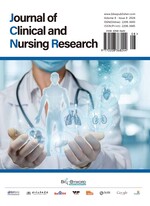Abstract
Objective: To investigate the influence of season on live birth and clinical pregnancy rates, as well as assisted reproductive technology (ART) outcomes, in the Hainan region. Methods: Patients were categorized into four groups based on the dates of artificial insemination and transplantation: spring, summer, autumn, or winter. The main outcome measures were clinical pregnancy rates and live birth rates. Secondary outcomes included body mass index (BMI), oocyte number, two pronuclei (2PN) cleavage rate, total gonadotropin (Gn) dosage and days, age, 2PN fertilization rate, sperm concentration, sperm PR rate, anti-Müllerian hormone (AMH), and endometrial thickness. Outpatient semen quality indicators included sperm PR rate, total sperm count, sperm concentration, and total sperm motility. Results: This retrospective cohort study analyzed 2,016 artificial insemination cycles and 1,783 ovarian retrieval cycles from January 2017 to October 2022, and assessed the semen quality of 6,651 outpatients from May 2017 to October 2022. In artificial insemination cycles, sperm PR rate and clinical pregnancy rate were highest in winter, with a statistically significant difference between groups (P < 0.05). Clinical pregnancy rate was influenced by both age and sperm PR rate (P < 0.05). In ovarian retrieval cycles, the winter group had significantly higher clinical pregnancy, 2PN fertilization, and 2PN cleavage rates than the other groups. The autumn group had higher live birth rates, though not significantly different. Additionally, winter months showed higher total sperm concentration and total sperm number compared to other seasons. Conclusion: Seasonality affected clinical pregnancy and live birth rates in artificial insemination cycles but not in ovarian retrieval cycles in the Hainan region. These findings suggest that while there is no need to choose a specific season for ovarian retrieval cycles, artificial insemination in winter may be preferable for patients.
References
Wood S, Quinn A, Troupe S, et al., 2006, Seasonal Variation in Assisted Conception Cycles and the Influence of Photoperiodism on Outcome in In Vitro Fertilization Cycles. Hum Fertil (Camb), 9(4): 223–229. https://doi.org/10.1080/14647270600806557
Levine RJ, Mathew RM, Chenault CB, et al., 1990, Differences in the Quality of Semen in Outdoor Workers During Summer and Winter. N Engl J Med, 323(1): 12–16. https://doi.org/10.1056/NEJM199007053230103
Rojansky N, Brzezinski A, Schenker JG, 1992, Seasonality in Human Reproduction: An Update. Hum Reprod, 7(6): 735–745. https://doi.org/10.1093/oxfordjournals.humrep.a137729
Leathersich SJ, Roche CS, Walls M, et al., 2023, Season at the Time of Oocyte Collection and Frozen Embryo Transfer Outcomes. Hum Reprod, 38(9): 1714–1722. https://doi.org/10.1093/humrep/dead137
Revelli A, La Sala GB, Gennarelli G, et al., 2005, Seasonality and Human In Vitro Fertilization Outcome. Gynecol Endocrinol, 21(1): 12–17. https://doi.org/10.1080/09513590500098307
Hutchinson P, Barkham TM, Tang W, et al., 2015, Measurement of Phenotype and Absolute Number of Circulating Heparin-Binding Hemagglutinin, ESAT-6 and CFP-10, and Purified Protein Derivative Antigen-Specific CD4 T Cells Can Discriminate Active From Latent Tuberculosis Infection. Clin Vaccine Immunol, 22(2): 200–212. https://doi.org/10.1128/CVI.00607-14
Rojansky N, Benshushan A, Meirsdorf S, et al., 2000, Seasonal Variability in Fertilization and Embryo Quality Rates in Women Undergoing IVF. Fertil Steril, 74(3): 476–481. https://doi.org/10.1016/s0015-0282(00)00669-5
Ossenbühn S, 1998, Exogenous Influences on Human Fertility: Fluctuations in Sperm Parameters and Results of In-Vitro Fertilization Coincide with Conceptions in the Normal Population. Hum Reprod, 13(8): 2165–2171. https://doi.org/10.1093/humrep/13.8.2165
Weigert M, Feichtinger W, Kulin S, et al., 2001, Seasonal Influences on In Vitro Fertilization and Embryo Transfer. J Assist Reprod Genet, 18(11): 598–602. https://doi.org/10.1023/a:1013160905497
Wunder DM, Limoni C, Birkhäuser MH, et al., 2005, Lack of Seasonal Variations in Fertilization, Pregnancy and Implantation Rates in Women Undergoing IVF. Hum Reprod, 20(11): 3122–3129. https://doi.org/10.1093/humrep/dei177
Kirshenbaum M, Ben-David A, Zilberberg E, et al., 2018, Influence of Seasonal Variation on In Vitro Fertilization Success. PLoS One, 13(7): e0199210. https://doi.org/10.1371/journal.pone.0199210
Liu X, Bai H, Mol BW, et al., 2019, Seasonal Variability Does Not Impact In Vitro Fertilization Success. Sci Rep, 9(1): 17185. https://doi.org/10.1038/s41598-019-53919-3
World Health Organization, 2010, WHO Laboratory Manual for the Examination and Processing of Human Semen (5th Edition). World Health Organization Press, Geneva.
Baker VL, Jones CE, Cometti B, et al., 2010, Factors Affecting Success Rates in Two Concurrent Clinical IVF Trials: An Examination of Potential Explanations for the Difference in Pregnancy Rates between the United States and Europe. Fertil Steril, 94(4): 1287–1291. https://doi.org/10.1016/j.fertnstert.2009.07.1673
Younglai EV, Holloway AC, Foster WG, 2005, Environmental and Occupational Factors Affecting Fertility and IVF Success. Hum Reprod Update, 11(1): 43–57. https://doi.org/10.1093/humupd/dmh055
Gindes L, Yoeli R, Orvieto R, et al., 2003, Pregnancy Rate Fluctuations During Routine Work in an Assisted Reproduction Technology Unit. Hum Reprod, 18(11): 2485–2488. https://doi.org/10.1093/humrep/deg455
Dunphy BC, Anderson-Sykes S, Brant R, et al., 1995, Human Embryo Implantation Following In-Vitro Fertilization: Is There A Seasonal Variation? Hum Reprod, 10(7): 1825–1827. https://doi.org/10.1093/oxfordjournals.humrep.a136184
Eryilmaz OG, Devran A, Sarikaya E, et al., 2011, Melatonin Improves the Oocyte and the Embryo in IVF Patients with Sleep Disturbances, But Does Not Improve The Sleeping Problems. J Assist Reprod Genet, 28(9): 815–820. https://doi.org/10.1007/s10815-011-9604-y
Yie SM, Brown GM, Liu GY, et al., 1995, Melatonin and Steroids in Human Pre-Ovulatory Follicular Fluid: Seasonal Variations and Granulosa Cell Steroid Production. Hum Reprod, 10(1): 50–55. https://doi.org/10.1093/humrep/10.1.50
Wehr TA, 2001, Photoperiodism in Humans and Other Primates: Evidence and Implications. J Biol Rhythms, 16(4): 348–364. https://doi.org/10.1177/074873001129002060
Ozelci R, Yilmaz S, Dilbaz B, et al., 2016, Seasonal Variation of Human Sperm Cells Among 4,422 Semen Samples: A Retrospective Study in Turkey. Syst Biol Reprod Med, 62(6): 379–386. https://doi.org/10.1080/19396368.2016.1225322
Lei HE, Han H, Zhang XD, et al., 2022, Multivariate Data Analysis of 11,973 Male Semen Qualities in Beijing Area. Chinese Journal of Human Sexuality, 31(4): 1–6.
